‘House of the Dragon’ Season 2, Episode 3 Breakdown: What’s So Hot About Harrenhal?
In this week’s ‘HotD’ deep dive, we look at Daemon’s leaky, cursed conquest, Blackwoods vs. Brackens, dragonseeds and dragon eggs, and more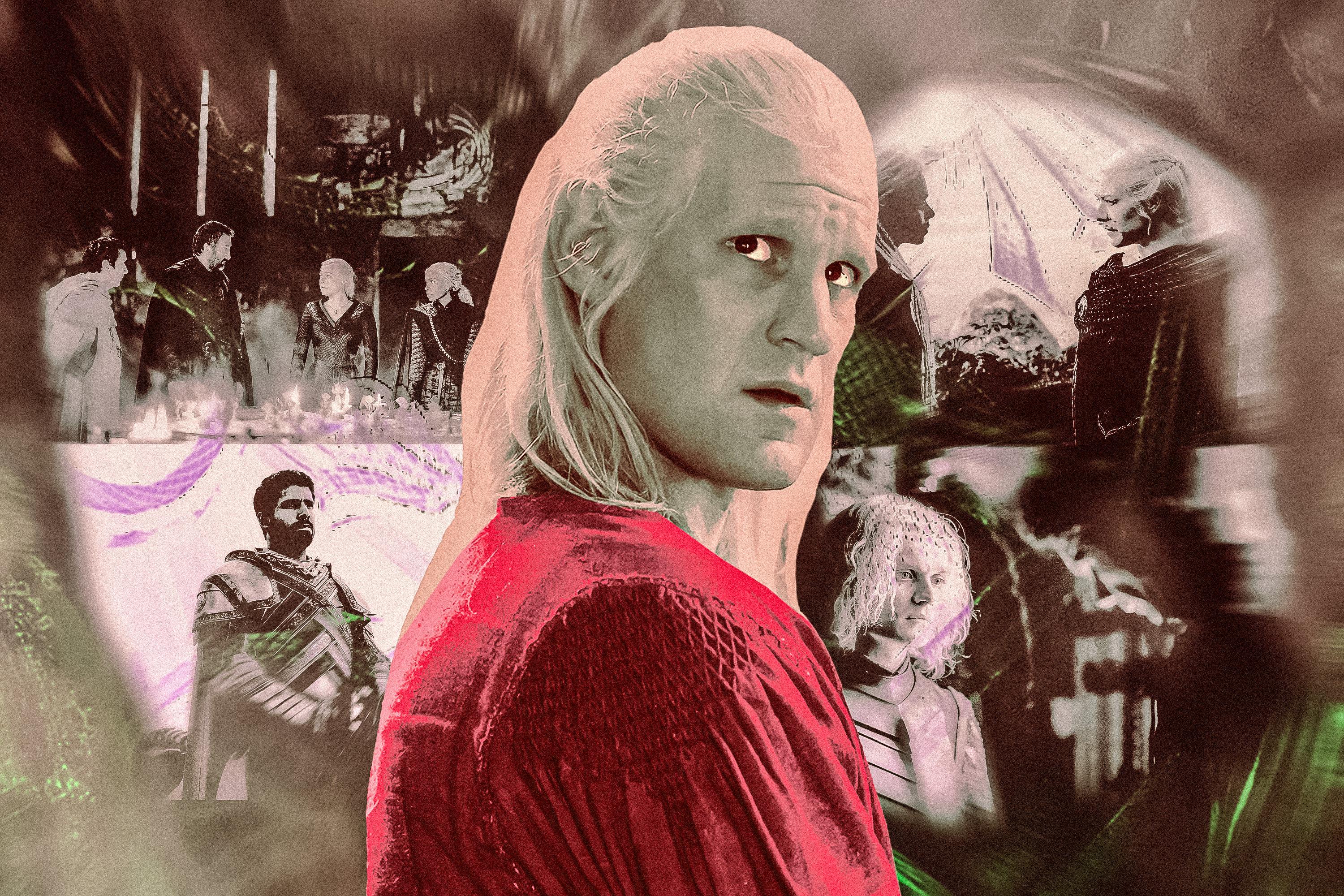
War is heating up. Episode 3 of House of the Dragon’s second season brought us both our first actual battle (though it happened off-screen) and the fall of our first castle (though it surrendered without any protest). Let’s break down “The Burning Mill,” starting with the history of Harrenhal.
Deep Dive of the Week: The Legacy and Tragedy of Harrenhal
Daemon wants Harrenhal. Criston wants Harrenhal. Aemond wants Harrenhal. It seems that just about the only person in Westeros who doesn’t want Harrenhal is Ser Simon Strong, who surrenders it willingly to Daemon rather than face the fires of Caraxes. So what’s the deal with this old, gloomy fortress?
As I wrote after Episode 1, Harrenhal is of major strategic importance in this war. It’s the largest castle in Westeros, and its location in the now war-torn Riverlands splits the green-controlled Westerlands from the black-controlled Vale. Plus, it’s not too far from King’s Landing. As many characters have noted, all of this makes it crucial to the entire war effort.
But Harrenhal is interesting not just for its strategic implications. It also has a rich legacy of tragedy and misfortune that makes most in Westeros consider it cursed.
In the centuries before Aegon’s Conquest, Westeros was divided and ruled by kings. One such king was Harren Hoare, who ruled both the Riverlands and the Iron Islands. Harren was a tyrant, and his cruelty earned him the moniker Black Harren. The previous kings of House Harren ruled from a town named Fairmarket, but Harren desired a grand fortress to express his might. He spent most of his 40-year reign constructing Harrenhal, the largest castle in the realm. Harren drained the Riverlands and the Iron Islands of their wealth to construct the gargantuan structure and drove thousands to their deaths in the process. According to the histories, the day Harrenhal was finally completed was also the day Aegon the Conqueror landed in Westeros.
As Aegon advanced through the Riverlands, lords rose up to support the dragon king and revolt against the despotic Harren. Houses Tully, Blackwood, Mallister, Vance, Bracken, Piper, Frey, and Strong surrounded Harrenhal. But Harren had designed his mighty fortress to withstand any army or siege, and he took refuge in the highest tower. As Tywin says in Game of Thrones, “A million men could have marched on these walls, and a million men would’ve been repelled.”
However, Harrenhal was not designed with dragons in mind. Aegon took Balerion the Black Dread and literally melted the giant stone towers, killing Harren and his sons and ending House Hoare forever. This is why Harrenhal is in such a state of disrepair when Daemon arrives, even 130 years after the Conquest. It’s also why House Tully presently rules the Riverlands—and why its seat is Riverrun and not Harrenhal.
After the death of Black Harren, the castle passed to Quenton Qoherys, who was the master-at-arms at Dragonstone during the Conquest. But Quenton’s lordship didn’t last long. He died in 9 AC after a fall from his horse (definitely not at all suspicious), and his foolish and lusty grandson Gargon took over as the head of House Qoherys.
Then, well, the Riverlands did what they always seem to do—erupt in ruinous infighting. In the first year of King Aenys, a bandit named Harren the Red (who claimed to be a grandson of Harren Hoare, a.k.a. Harren the Black) stoked a rebellion against the crown, seizing Harrenhal. He sliced off Gargon’s genitals and fed them to a dog while Gargon bled to death. Thus ended the Qoherys line.
Aenys soon subdued Harren the Red’s rebellion and passed control of Harrenhal to Lucas Harroway. Lucas married one of his daughters, Alys, to Prince Maegor Targaryen, and when Maegor became king, Lucas became Maegor’s hand. But as I detailed last week, Maegor was horribly despotic. Alys failed to produce a healthy son for the king, and there were rumors that Lucas was sending men to his daughter’s bedchamber in a desperate attempt to speed the process along. When Maegor found this out, he had every Harroway he could find killed, and so ended House Harroway.
So many men wanted to succeed Lucas Harroway that Maegor threw a tournament to decide control of the castle. One Ser Walton Towers won the 23-man melee and thus became the new Lord of Harrenhal. But he died just a fortnight later of wounds suffered in the tourney.
Control of Harrenhal then passed to Walton’s son Jordan. As King Maegor began fighting more and more wars, Jordan stuck by the king—at the cost of nearly all of his sons. When he died in 53 AC, he passed Harrenhal to the young and sickly Maegor Towers, his only living son. This Maegor lasted only a few years before dying in an unspecified manner. As Maegor Towers had no heirs, his death ended House Towers.
At this point, possession of Harrenhal passed to Rhaena Targaryen, the sister of King Jaehaerys. After a deeply tragic first 30 or so years of life, Rhaena had taken a tower in Harrenhal as her residence while Maegor Towers was still alive. She forged a friendship with Maegor Towers during that time and oversaw his small coterie of servants and housekeepers after his death. When she died in 73 AC, it was time for Harrenhal to find a new lord.
King Jaehaerys granted Harrenhal to Bywin Strong, the brother of Lucamore Strong, one of the knights in his Kingsguard. (Fun aside: Lucamore was later found to have three secret wives and was sent to the Wall.) And thus, we have all but arrived at the start of House of the Dragon. It’s not clear exactly what relationship Bywin had with Lyonel Strong, Viserys’s master of laws and the Lord of Harrenhal for much of Season 1, but it is Lyonel who controls the castle at the beginning of the series. When Lyonel and his son and heir Harwin die in a mysterious fire in Season 1, control of the castle passes to Larys.
Safe to say, by this point Harrenhal is viewed as absolutely cursed. The ruined, dismal seat of Harren the Black has brought only doom to every house that had ever occupied it—four of them in less than a century! The smallfolk think that the thousands of souls who died in the castle’s construction haunt its halls. In all this family turnover, the twisted, melted towers of Harrenhal have never truly been repaired, adding to the eerie atmosphere.
What better cover for Larys to murder his father and brother and take the lordship for himself in Season 1? As Simon Strong—Larys’s great-uncle—points out, a fire is highly unlikely at Harrenhal. But the castle’s eerie reputation shields Larys from any real suspicion.
This also may help explain why Simon turns over control of the castle so quickly. Not only has Harrenhal already proved to be no match for a dragon, but who really wants the misfortune of managing it at this point? If it weren’t for its unique ability to house a very large army, I imagine neither side would want it at all (even as it is, it can’t seem to keep anyone dry).
Daemon now has Harrenhal. He’s also already being haunted by it. On what seems like his first night there, he has a dream of a young Rhaenyra sewing prince Jaehaerys’s head back onto his body. And when he wakes from that, he’s standing in front of a weirwood tree somewhere outside the castle. A black-haired woman is there with him. “You’ll die in this place,” she says. How hospitable.
Quick Hits
Westeros’s Oldest Feud Adds Another Chapter
Death, taxes, and Brackens and Blackwoods using any excuse to kill each other. These two Riverlands houses have been fighting each other for millennia—or at least for so long that no one knows when their quarrel began or what it was about. Ask the Blackwoods, and they’ll tell you that they were once kings of the Riverlands until the Brackens rose against them. The Brackens will tell you much the same tale, but in reverse. At any rate, they’ve been warring for longer than anyone in Westeros can remember. Here’s how Hoster Blackwood describes the situation to Jaime Lannister in A Dance With Dragons:
We’ve had a hundred peaces with the Brackens, many sealed with marriages. There’s Blackwood blood in every Bracken, and Bracken blood in every Blackwood. The Old King’s Peace lasted half a century. But then some fresh quarrel broke out, and the old wounds opened and began to bleed again. That’s how it always happens, my father says. So long as men remember the wrongs done to their forebears, no peace will ever last. So we go on century after century, with us hating the Brackens and them hating us. My father says there will never be an end to it.
It’s not clear why exactly the Blackwoods declare for Rhaenyra and the Brackens for Aegon, though one hint comes from the duel between two members of these houses in Episode 4 of Season 1. Remember that? In Fire & Blood, this happens a bit differently—it’s a different Blackwood (Lord Samwell) and a different Bracken (Lord Amos) who fight over Rhaenyra in the book, and both live. It’s also Samwell Blackwood who loses the duel in the book, while in the show the Blackwood boy wins. In Fire & Blood, both Samwell and Amos grow up to rule their houses, and it makes some sense that Amos Bracken feels slighted by Rhaenyra after she chose to marry another despite his victory in the duel. Of course, it doesn’t really matter who won what duel or who is on which side—whichever side House Bracken or Blackwood picked, the other would certainly choose the opposite.
At any rate, the Battle of the Burning Mill is the first true battle in the Dance of the Dragons. In the book, Amos Bracken kills Samwell Blackwood in this skirmish. If that happened in the show, it happened off-screen. But we should be seeing Amos at some point soon, as his character was cast for this season. That means we may not have seen the last of the Brackens and Blackwoods killing one another. Because of course we haven’t.
Meet Ulf
The Targaryen custom of marrying brother to sister—or uncle to niece—is (in)famous. It keeps the blood of the dragon strong and the Targaryen family close-knit. It’s why few houses in the realm can claim Targaryen ancestry, even though the Targaryens have spent more than a century on the throne, which under any other circumstances would have produced many marriages to other powerful families. (Think about how, at the outbreak of World War I, the kings of Britain, Germany, and Russia were all cousins. That’s not how Westeros works.)
But despite this incestuous tradition, “young blood runs hot,” as Fire & Blood tells us. Targaryen princes have fathered many bastards over the decades, and many of those children have subsequently had children of their own. These bastards are said to have been “born of dragonseed” and are often simply called “dragonseeds” or “seeds.” Dragonstone and King’s Landing are full of residents who claim to have the blood of the dragon flowing through their veins, even if they don’t have silver hair. Ulf certainly isn’t the first Westerosi to boast of his royal lineage in a King’s Landing tavern, though he should probably keep his voice down when professing that he believes Rhaenyra to be the true heir to the Iron Throne.
But Ulf doesn’t just claim to be a Targaryen bastard. He has a whole family tree mapped out, telling his companions that he’s the son of Baelon Targaryen, Viserys’s father and Rhaenyra’s grandfather. Is this believable?
Baelon was the second son of King Jaehaerys Targaryen, the Conciliator. He quickly became known as “Baelon the Brave” after he hit Balerion the Black Dread on the snout as a child, and as a teenager he frequently competed as a mystery knight in tourneys, where he proved himself a capable warrior. He soon claimed Vhagar as his mount.
Baelon was also very close to his younger sister Alyssa. When he was 18 and she was 15, they wed, and “the bedding that followed their wedding feast was the source of much ribald humor in the days that followed,” Fire & Blood tells us. “For the young bride’s sounds of pleasure could be heard all the way to Duskendale.” The book also calls Baelon “a lusty lad” and notes that “those same shrieks of pleasure that had echoed through the halls of the Red Keep on the night of their bedding were heard many another night in the years that followed.” Soon, Alyssa gave birth to Viserys. Two more sons quickly followed.
But tragedy struck during the birth of their third son. Alyssa never recovered from a long and difficult labor and died within a year—as did the boy, who perished before his first birthday. Baelon was “shattered” by the loss.
But Baelon lived for another 17 years after Alyssa’s death before dying of a “burst belly” in 101 AC (it was his death that prompted Jaehaerys’s succession crisis and the subsequent Great Council that established Viserys as the heir to the throne). He could’ve fathered children in that time, but Fire & Blood doesn’t drop any hints.
A couple of years after Alyssa’s death, Baelon’s much younger sister Viserra tried to seduce him in the hopes of eventually marrying him. But when the 29-year-old Baelon found the 15-year-old Viserra, drunk and naked, in his chambers one night, he sent her away. Baelon never remarried before his untimely death.
Could it be that the famously lusty Baelon simply lost his desire after his wife’s passing? Or did he gain a mistress in the years following Alyssa’s death? Did he really never dally with another woman, be it another noble, an innkeeper’s daughter, or even a worker at a brothel? It’s really impossible to say—any explanation is equally plausible, and Fire & Blood is silent on the subject.
But consider again what it means for Baelon to have been a bachelor for 17 years. In that stretch, any unmarried young maid in King’s Landing who surprisingly found herself pregnant had the perfect person to name as the father. Fire & Blood says that, on Dragonstone if not in King’s Landing, “Targaryens were rightly regarded as being closer to gods than the common run of men” and that women who had Targaryen bastards “were envied, and the children born of such unions were esteemed above all others.”
In short, Ulf very well may be the son of Baelon the Brave. But he’s also certainly not the only man in King’s Landing whose mother told him his father is a Targaryen prince.
Dyana Returns
This serving girl who gets mistreated at the pub in this episode?
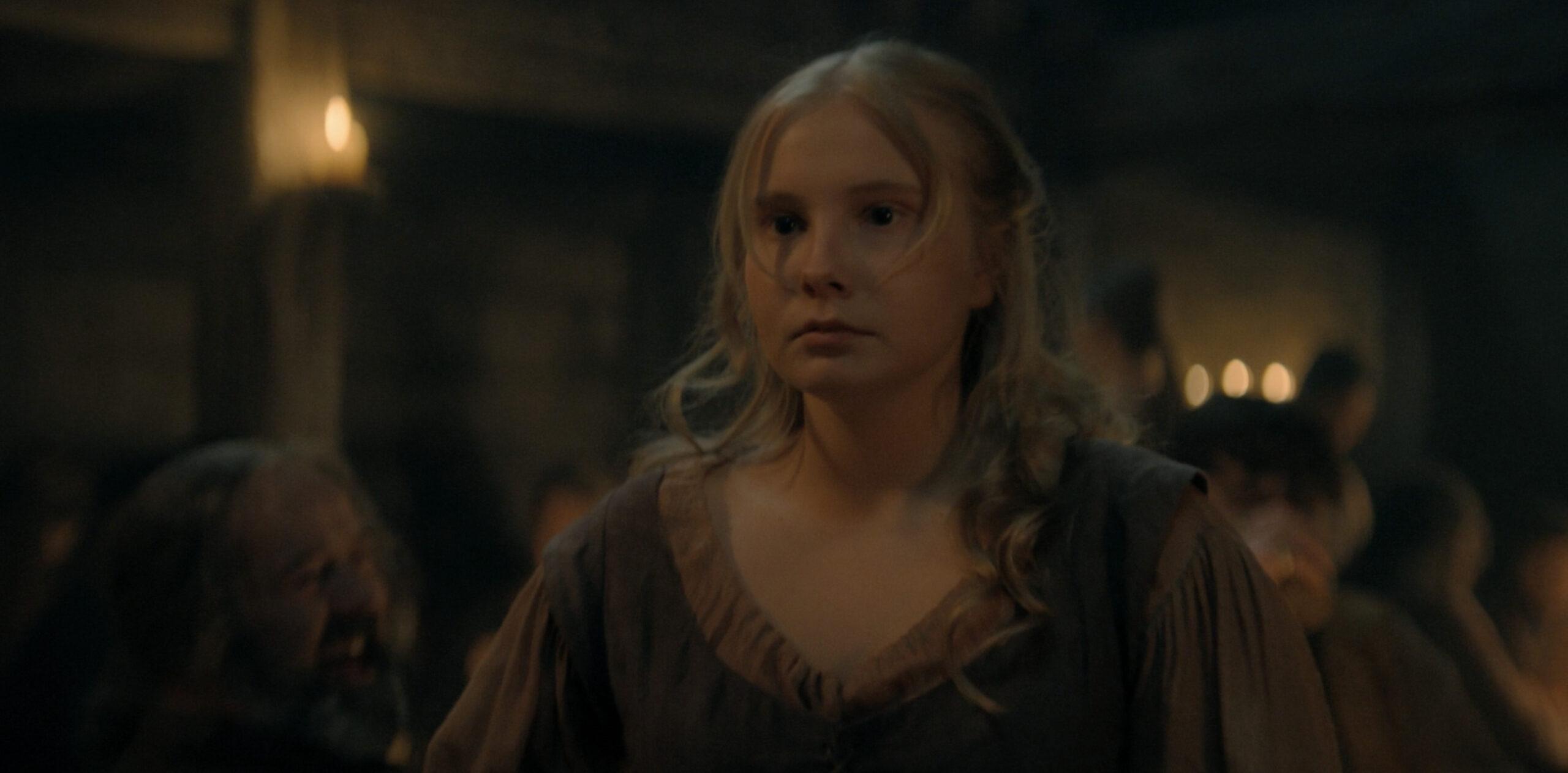
It’s Dyana, the servant whom Aegon rapes in Season 1:
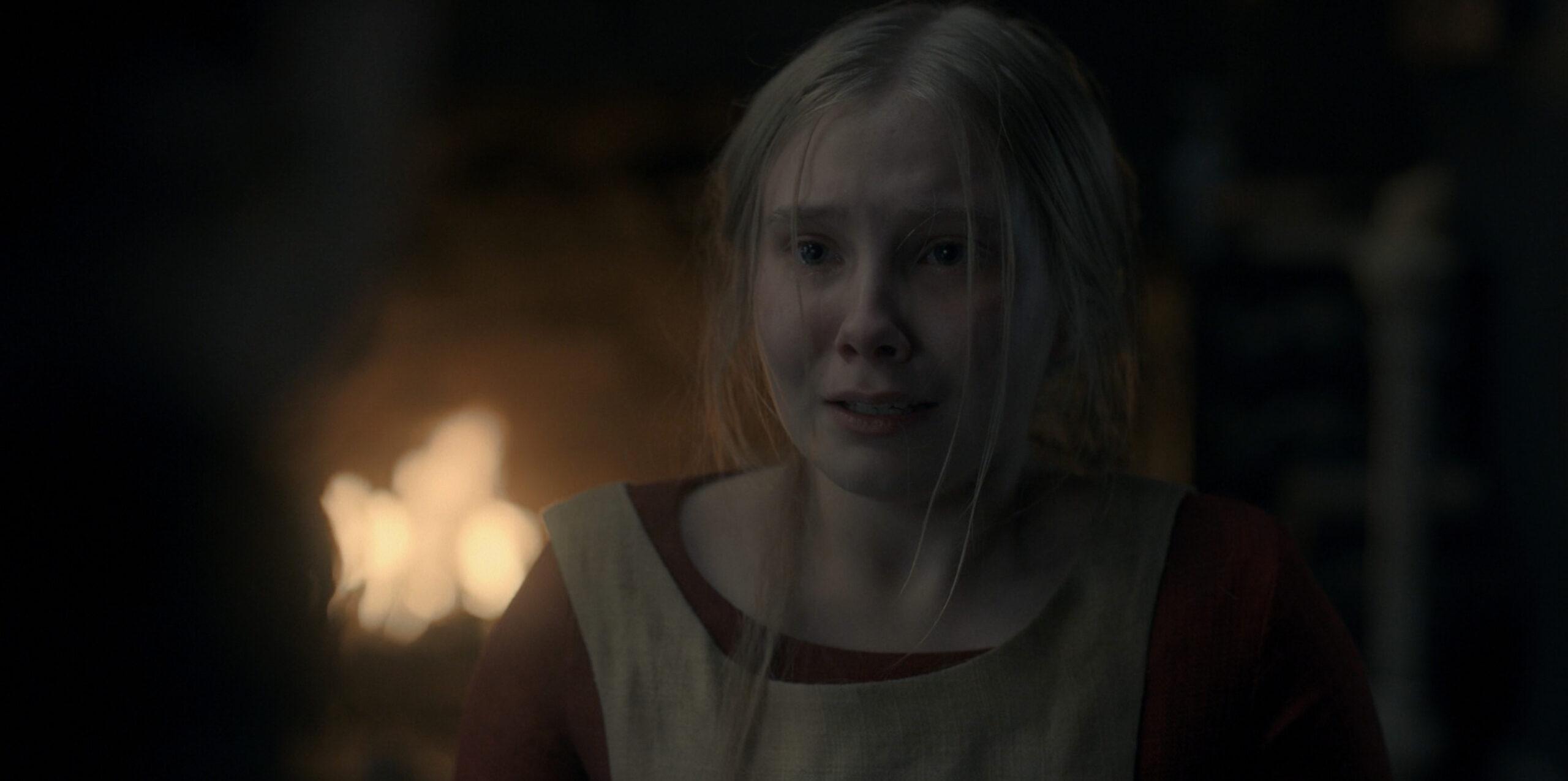
The camera lingers long enough on her here that I don’t think this is a case of House of the Dragon reusing actors, as Thrones sometimes did. (Remember when Martyn Lannister became Tommen Baratheon?) Alicent gave Dyana a sack of coin and some moon tea and sent her on her way, and I believe this is where she ends up: in a tavern, still being sexually assaulted. Life is hard in Westeros, especially for women who don’t have a noble last name.
Meet Gwayne Hightower
Speaking of returning characters, Alicent’s brother makes an appearance this episode. We’ve seen Gwayne before—in the very first episode of the show, he’s one of the knights in the tourney held to celebrate the impending birth of Rhaenyra’s brother. When Gwayne jousts with Daemon, Daemon pulls a Draymond Green and goes low, knocking Gwayne from his horse. Gwayne never removes his helm, and since he returns to Oldtown, we don’t see him for the rest of the season.
Now, Gwayne is back. In Fire & Blood, Otto summons him back to King’s Landing to serve as the second-in-command of the City Watch, as the Watch’s Lord Commander is deemed untrustworthy. Gwayne never leaves King’s Landing to go on the march to war. And, well, that’s about all we learn of him. This is one of those areas where the show can expand on a character who in the book is little more than a name on a page.
The Kingsguard Can Fuck!
As I wrote after Episode 1, the books don’t include a vow of chastity for members of the Kingsguard. The knights swear not to have children or wives, but they can, uh, “get it wet.” The show appears to be making a bit of a tweak to this, as “chastity” has now been mentioned twice—once in this episode and once in Season 1, when Criston laments breaking his vow of chastity with a young Rhaenyra.
But what’s the worth of a vow if even the king will turn a blind eye toward breaking it? This episode settled any debate: The Kingsguard can fuck.
Meet the New Kingsguard
Speaking of the Kingsguard, you may be wondering who this new crew of white cloaks is. Well, remember Aegon’s drinking buddies in the season premiere?
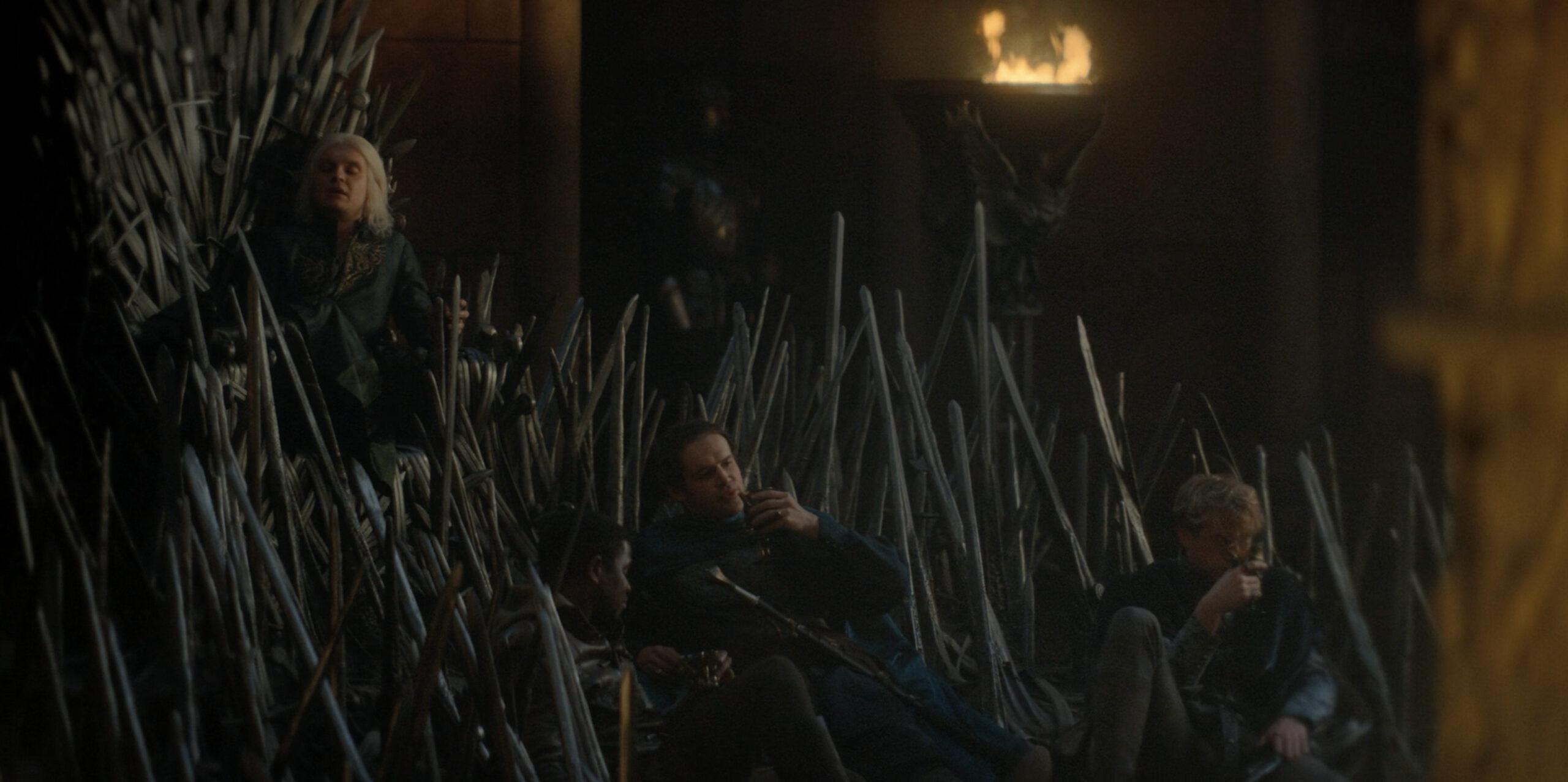
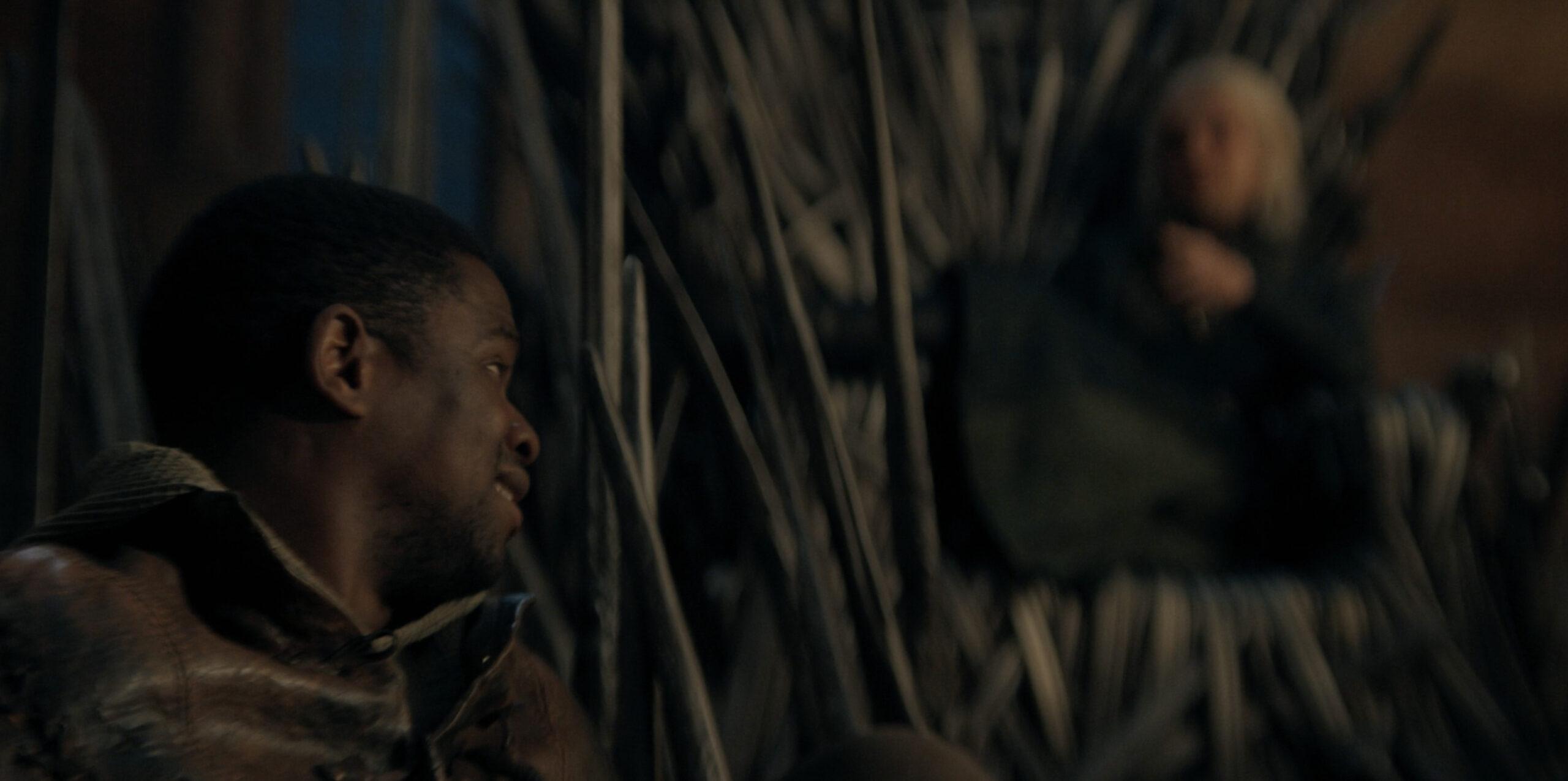
These are the same guys:
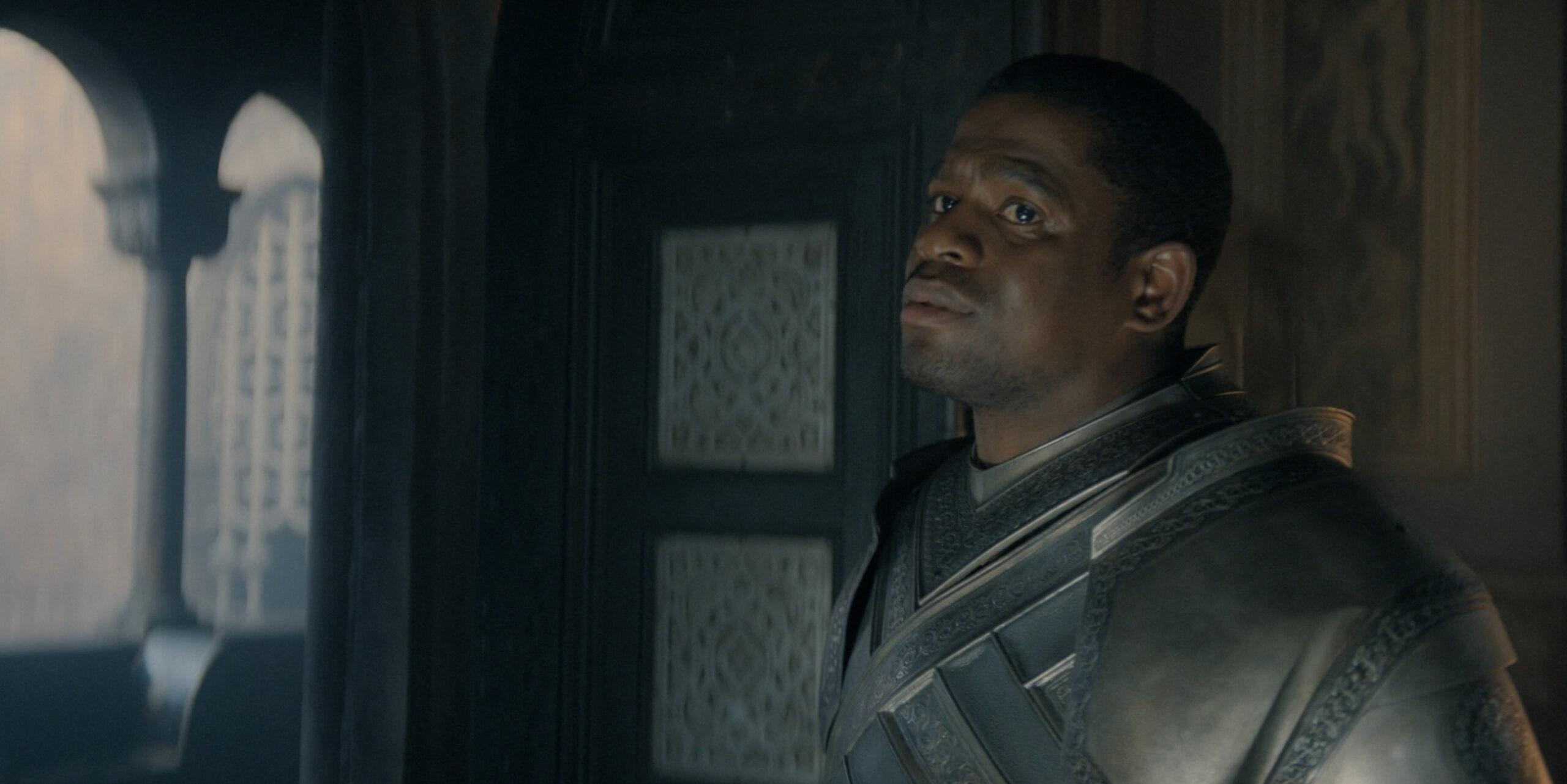
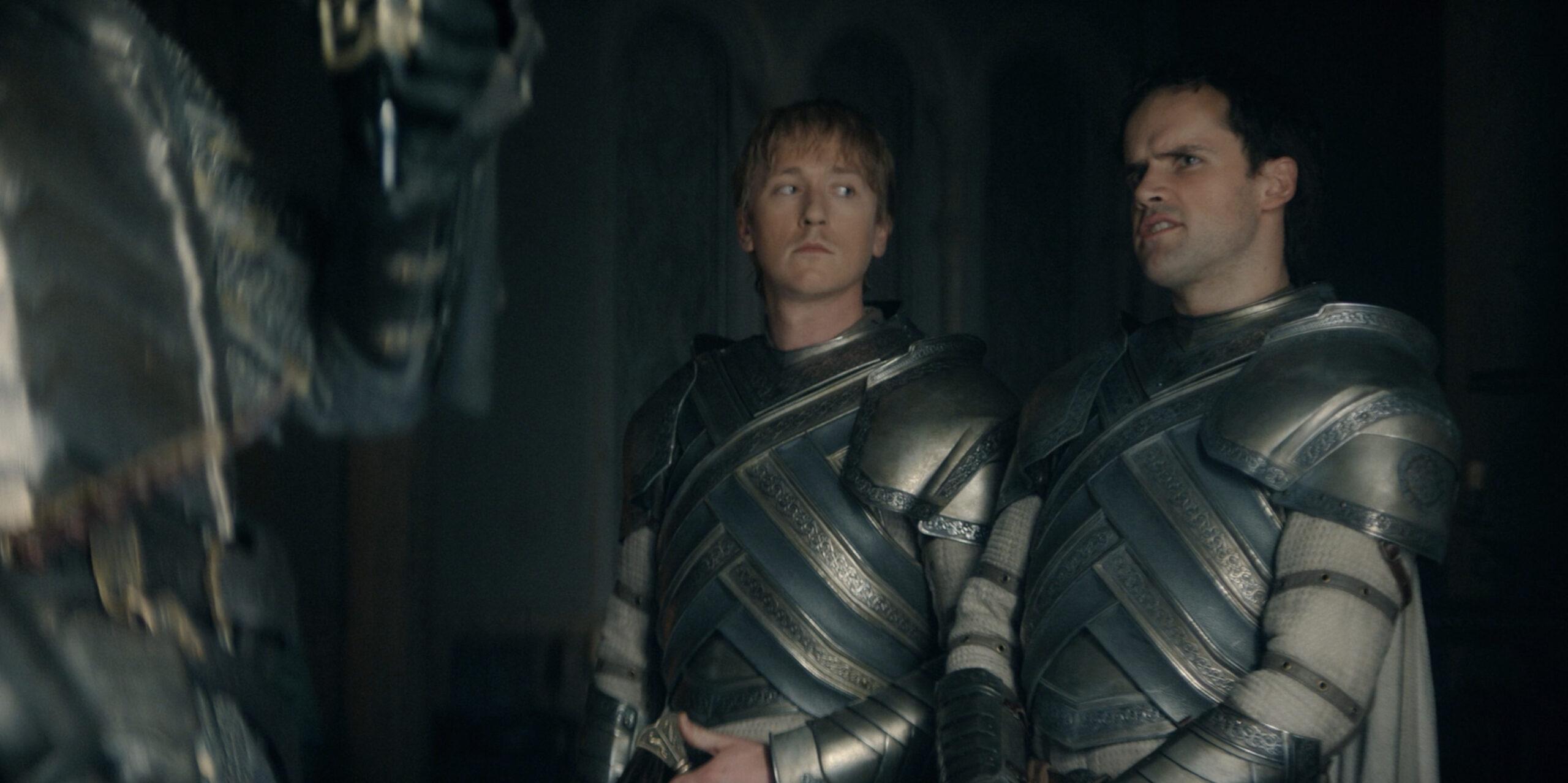
Yeah, this explains a lot. Despite the recent murder of the heir to the Iron Throne, the security in King’s Landing is still atrocious. The Lord Commander of the Kingsguard is leaving to raise an army. Rhaenyra Targaryen herself sneaks into the Grand Sept and sits directly next to the queen dowager. King Aegon spends a night out at a pub with a bunch of randos. His brother and the new heir to the throne spends his time naked at a whorehouse!
Episode 3 makes it pretty clear that if the blacks wanted to, they could easily assassinate most of the major green characters and end this war without dragons, armies, or any real warfare at all. All they have to do is stick a few loyalists in one of King’s Landing’s bars and wait for the king to show up. I’ve tried to explain why the security is so lax these past few weeks by noting that the Kingsguard’s numbers have dwindled and many of the knights in King’s Landing are watching for dragon attack. But this episode made it feel like a plot hole—one we’ll have to just set aside for the purposes of enjoying the show.
Are Those Daenerys’s Eggs?
This week, Rhaenyra sends Rhaena and Joffrey to the Vale. She also sends four dragon eggs:
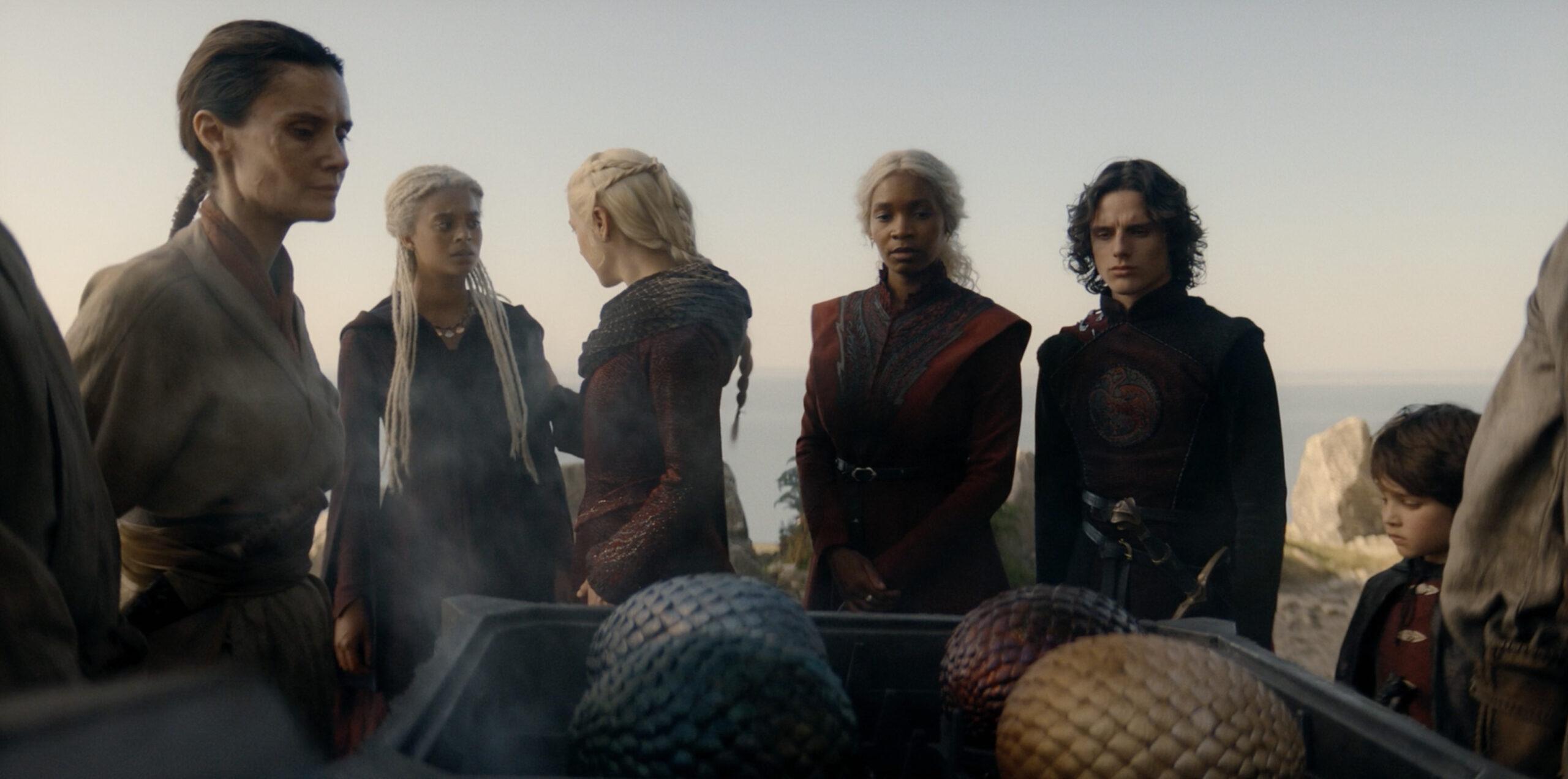
Look familiar?

It’s difficult to see, but Daenerys’s three eggs are red, yellow, and green, as are three of the eggs Rhaenyra is sending out. This can’t be a coincidence. And for eagle-eyed viewers, this is a very fun and exciting Easter, uh, egg. But for book readers, it’s bittersweet at best. That’s because readers already have a great, heavily hinted at origin story for Daenerys’s eggs.
Remember the princess I mentioned earlier, Rhaena Targaryen? The one who took up residence in Harrenhal toward the end of her life? Before she sequestered herself in that damp old fortress, she lived for a time at Fair Isle, where she met a noble lady named Elissa Farman. Rhaena and Elissa grew close, and Elissa soon joined Rhaena’s court at Dragonstone.
But once on Dragonstone, Elissa became bored. The Farmans had “sailed the western seas since the Dawn Age,” per Fire & Blood, and Elissa had the heart of an adventurer. From the book:
As a child, it was said that she spent more time at sea than upon the land. Her father’s crews used to laugh to see her climbing the rigging like a monkey. She sailed her own boat around Fair Isle at the age of four-and-ten, and by the time she was twenty she had voyaged as far north as Bear Island and as far south as the Arbor. Oftimes, to the horror of her lord father and lady mother, she spoke of her desire to take a ship beyond the western horizon to learn what strange and wondrous lands might lie on the far side of the Sunset Sea.
Elissa pleaded with Rhaena to raise gold so that she could sail the Sunset Sea—the sea to the west of Westeros. But Rhaena refused her. She couldn’t bear to lose her, uh, good friend.
Finally, Elissa left. She went to Driftmark, then caught a ship to Pentos, and from there made her way to Braavos, which houses some of the finest shipwrights in the world. A fortnight after her departure, it was discovered that three dragon eggs were missing from Dragonstone. Ser Merrell Bullock reasoned that Elissa must have made off with them and sold them in Essos to fund her adventure. King Jaehaerys was furious—and concerned that the eggs could hatch and a new dragonlord could rise against the Targaryens. But Grand Maester Benifer reassured him: “They may not hatch,” Benifer said. “Not away from Dragonstone. The heat … it is known, some dragon eggs simply turn to stone.”
“Then some spicemonger in Pentos will find himself possessed of three very costly stones,” Jaehaerys replied.
The crown never caught up with Elissa or those eggs. But this story was later confirmed by King’s Landing’s network of spies. Elissa had taken on the name Alys Westhill, sold the three dragon eggs to the Sealord of Braavos, and used the funds to build the ship Sun Chaser and sail it west into the Sunset Sea, where she vanished for good … except for many years later, when Corlys Velaryon—yes, our Corlys, the Sea Snake—caught a glimpse of an old, weathered ship in Asshai-by-the-Shadow that he swore forever after could only have been Sun Chaser.
Nearly 250 years after Elissa arrived in Essos with those eggs, the wealthy Pentosi magister Illyrio Mopatis gifted three dragon eggs to one Daenerys Targaryen on her wedding day. It was said that they’d long ago turned to stone.
Elissa Farman’s story endures regardless, but it sure hits harder if those eggs we see in this episode became Daenerys’s. It would be frustrating if the show undid that bit of lore.
Just Watch This
The Board Before Us
Daemon has taken Harrenhal. Criston is on his way there. Most of the other power players are sitting tight in King’s Landing or on Dragonstone. But with a few Riverlands houses declaring for each side, Westeros continues to get carved up. Here’s what the map looks like after Episode 3:
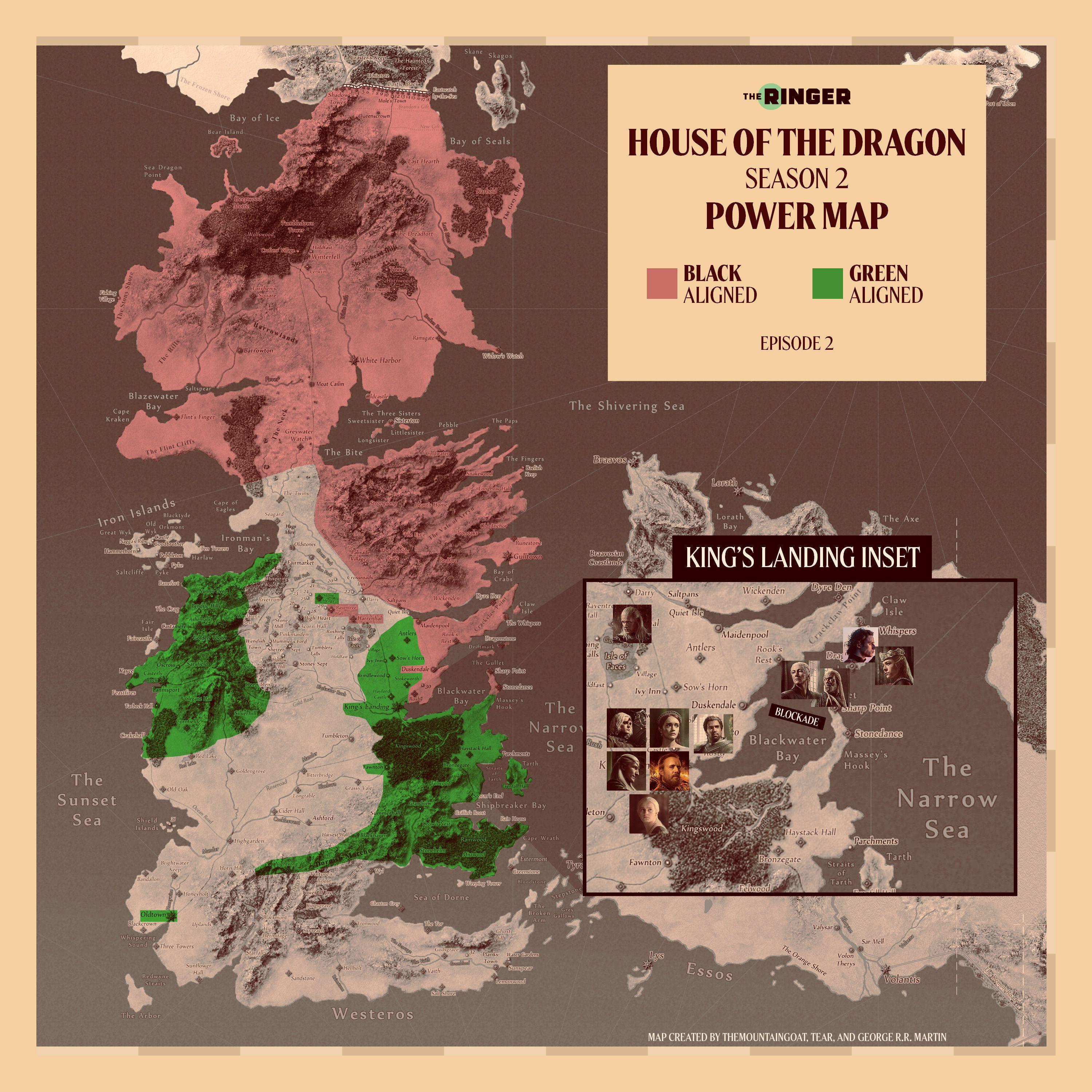
Next Time On ...
Next week, Rhaenyra says she is loosing “horrors.” I’m guessing that means we’re finally going to get real dragon warfare.


